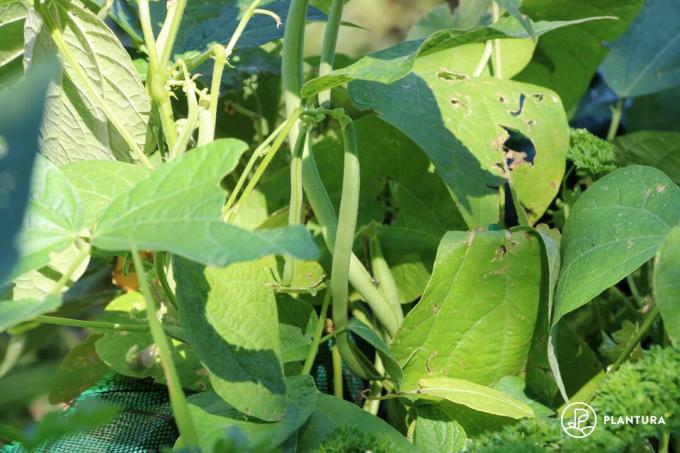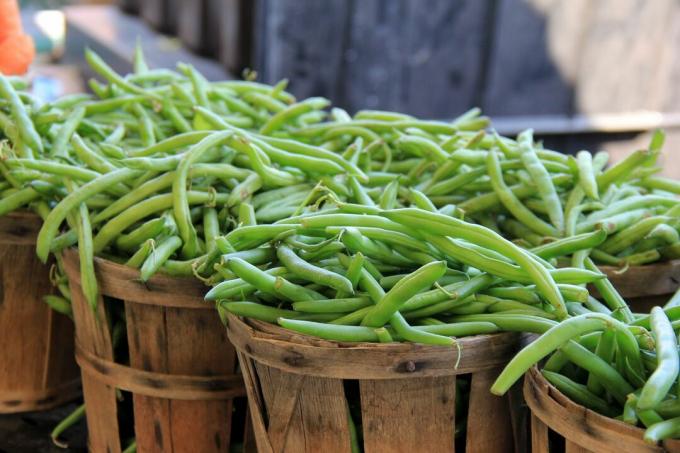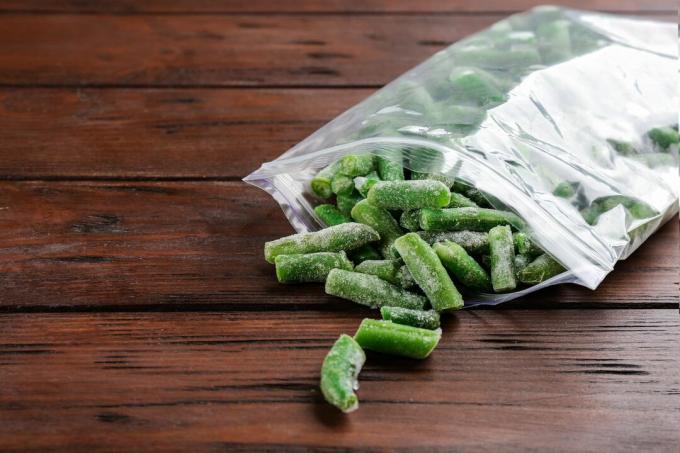You can grow beans in your own garden. But when is it time to harvest the beans and how can you then preserve them?

Whom beans (Phaseolus vulgaris) taste good, you should definitely grow it in your own garden. The healthy, locally produced vegetables are becoming increasingly rare in the supermarket, and the nitrogen-enriching plants even have a useful effect in the garden. If they are not accidentally attacked by diseases or eaten by snails as seedlings, beans are very grateful plants. So if you choose the bean cultivation in your own garden, how do you find out when the beans are ready to be harvested?
contents
-
Harvesting beans: When is harvest time for ripe beans?
- How do you know when the beans are ripe?
- Harvest broad beans
-
preserve beans
- Boil beans
- Put in beans
- Freeze raw beans
- drying beans
Harvesting beans: When is harvest time for ripe beans?
For beans sown in May, the main harvest season is in July and August. If you put the beans in the ground in June, the harvest time will be in early autumn. It should also be noted that beans don't just wear once. They consistently form new flowers and pods and can therefore be harvested over a period of time. However, one must not forget that the plant only has a certain energy potential at its disposal, which is usually quite used up after the first few harvest runs. On average, pole beans offer a slightly longer harvest period than bush beans.

How do you know when the beans are ripe?
You can easily find out when the beans are ready for harvest with the following method: Simply break a bean in half. If this can be broken easily and has a smooth break, then the chances are very good that the beans are ripe. At this stage, the beans are often not clearly visible on the pod. The beans inside the pod should not be larger than 1 cm. The younger the pods are harvested, the more tender the beans are. If you want to harvest bean seeds, you must of course wait until the seeds are (milk) ripe. You harvest the bean pods by pinching them off with your fingers or cutting them off with scissors or a knife.

Anyone who thinks the beans have produced enough harvest can chop up the plants and leave them on the bed. The plants no longer receive enough water, dry up quickly in summer and decompose. In this way, beans leave behind a very nitrogen-rich bed perfect for a new winter planting.
Harvest broad beans
broad beans are harvested when the bean seeds are clearly visible on the pods. Harvested young, the pods can also be eaten. When the harvest is fully ripe, the pods are usually opened and the seeds removed. If you want to keep them in the fridge for a few days, only then remove the beans from the pods.

preserve beans
Green beans taste best fresh, either blanched or steamed (they're poisonous raw!). But beans are grateful plants and often yield more than can be consumed in the short term. Fortunately, boiling and freezing are two ways to preserve the healthy beans for later consumption.

Boil beans
Beans are traditional as well paprika, cucumbers, zucchini and other vegetables boiled down with vinegar and sugar. This type of preservation has the advantage that later you only have to open a jar and serve ready-to-eat beans. However, the disadvantage of canning is that vitamins and taste are unfortunately lost.
Put in beans
Pickled beans are a way of short-term (approx. one week) to keep. Pickled beans are eaten like a salad.
Here is our recipe tip (for approx. 800 g beans):

- Boil the beans in salted water for 5-10 minutes until al dente or until soft, depending on taste, and then drain
- in a saucepan 250 ml water with 250 ml vinegar, 1 tbsp. salt, 300 g sugar, if necessary Bring 1 stick of cinnamon and a few cloves, 2 onions (cut into rings) to the boil and simmer briefly
- Place beans in an earthenware or porcelain pot and pour boiling liquid over them
- Beans should be covered and left to soak for at least a day
Freeze raw beans
Freezing is the most vitamin-friendly way of preserving beans. However, beans do not necessarily need to be blanched before freezing. Before freezing, the beans are simply washed and the ends cut off. If the beans are to be used later, for example for a stew, you can cut them into smaller pieces before freezing.

drying beans
If you want to harvest grain beans (the varieties 'Borlotti' and 'Canadian Wonder' are well suited for this), should allow the beans to fully ripen and dry as long as possible in dry weather permit. Here it is important that the beans are really completely dry and therefore have a good shelf life. It is therefore worth spreading the beans out in a dry place (e.g. on newspaper) for at least two weeks after harvesting. Cans or glasses are ideal for storage.
There are numerous different types of beans, which not only differ in taste, but also in appearance and use. In our overview article we present you with old, new and resistant ones types of beans in front.



